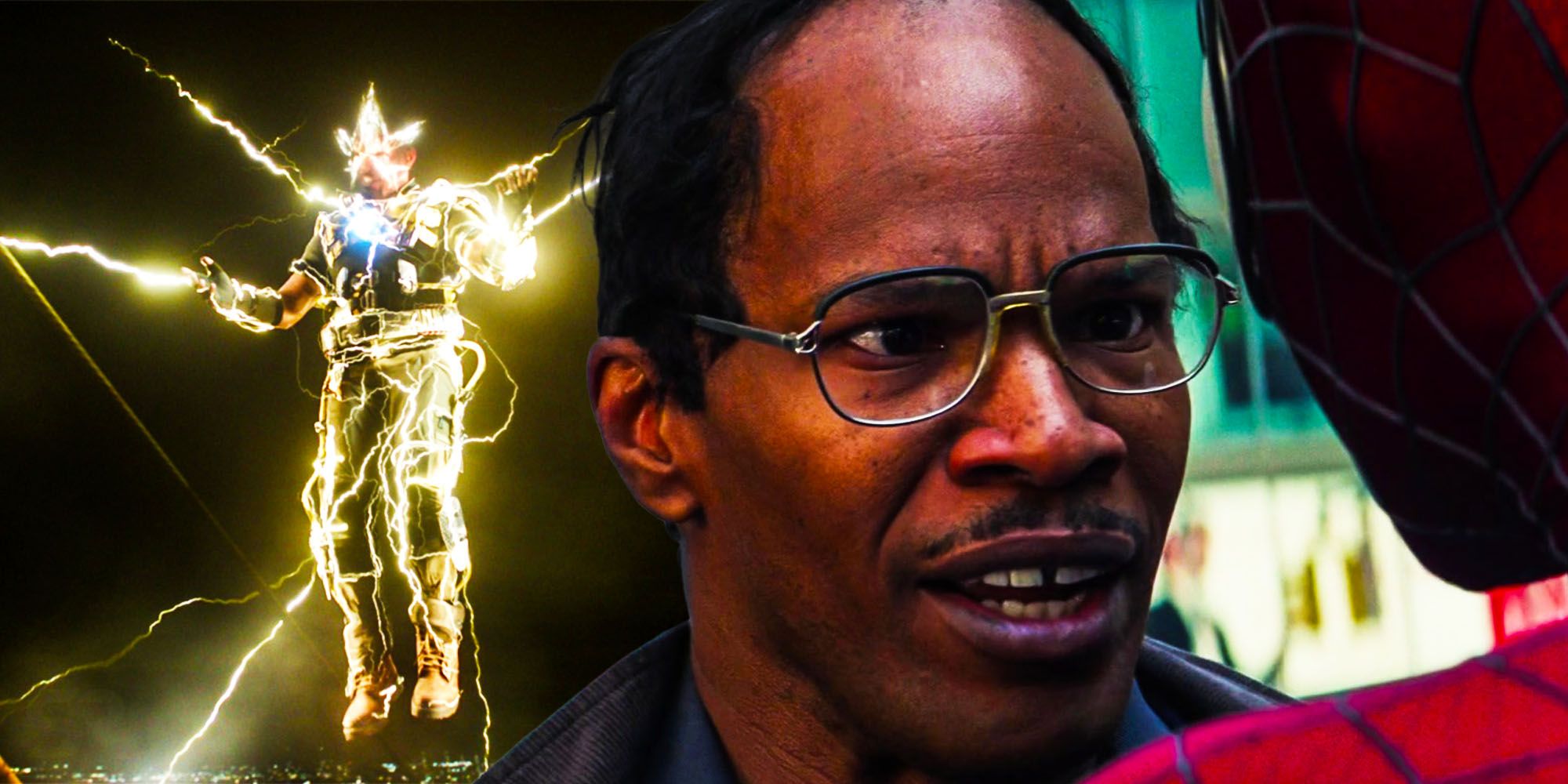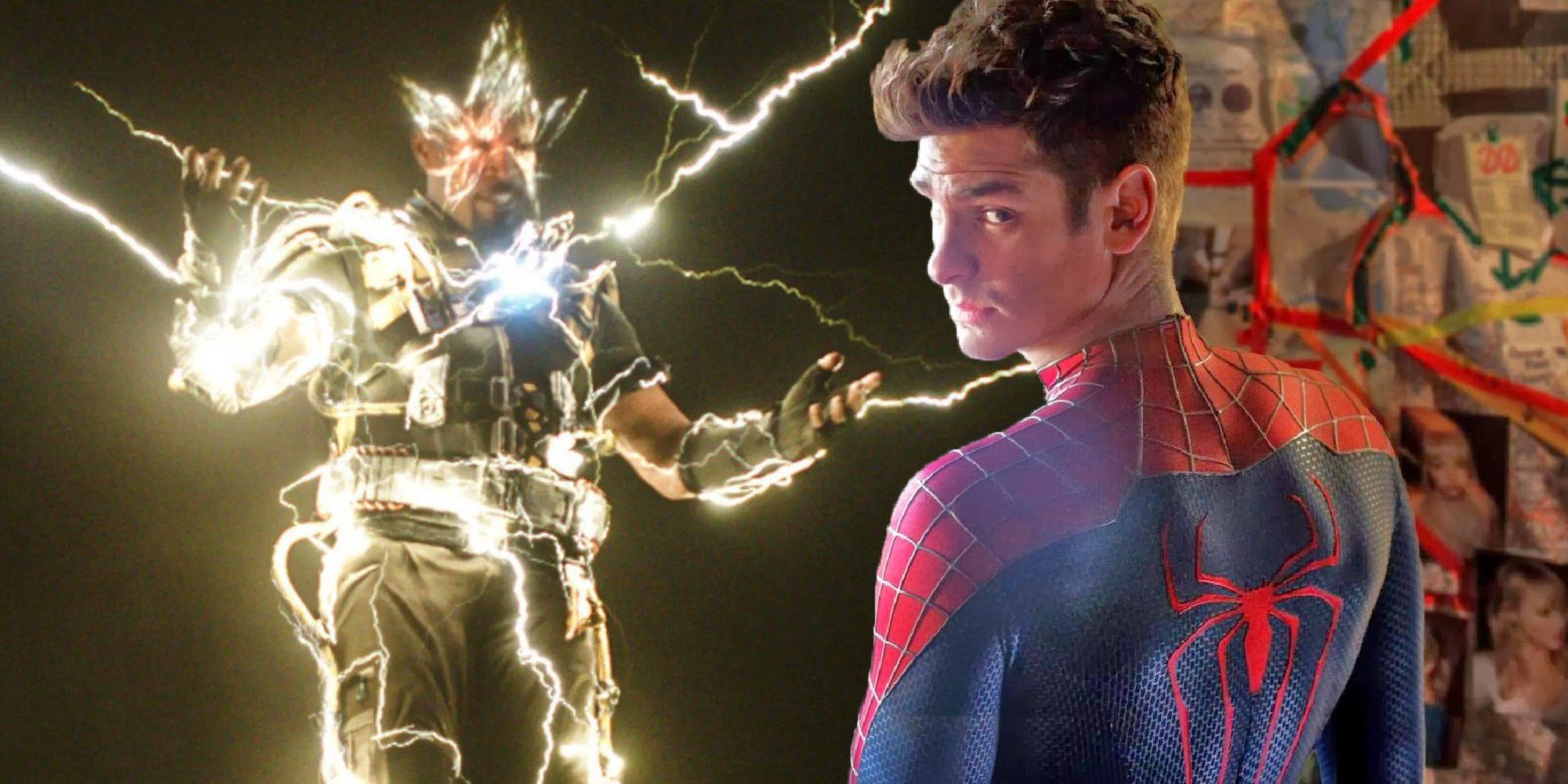Warning: Contains SPOILERS for Spider-Man: No Way Home.
The Marvel Cinematic Universe appears to introduce a significant Electro plot hole in Spider-Man: No Way Home, but the film may subtly offer a solution. Spider-Man: No Way Home brought various Spider-Man franchises together for the first time. In the movie, Peter Parker (Tom Holland) appeals to Doctor Strange (Benedict Cumberbatch) to make the world forget that he's secretly Spider-Man, and the sorcerer obliges. Unfortunately, the spell goes wrong, and villains from past Spider-Man films appear in the MCU. These incoming villains include Alfred Molina's Doc Ock, Willem Dafoe's Green Goblin, and Jamie Foxx's Electro.
Tom Holland's Spider-Man makes the ultimate sacrifice at the film's end. After some villainous antics from Willem Dafoe's Green Goblin, more Spider-Man villains start breaking into the MCU. And with the Multiverse cracking, more is now at stake. However, the villains arriving all apparently know Peter Parker as Spider-Man. That's what draws them into the MCU. So to stop them, Tom Holland's Spider-Man gets Doctor Strange to cast a spell where everyone forgets they know Peter Parker. The spell prevents the villains from entering the MCU, but it also leaves Holland's character alone.
Following the film's release, fans pointed out an Electro plot hole, but the film may have a solution. In the movie, villains that know Peter Parker as Spider-Man enter the MCU, but Electro doesn't technically discover that in his film. However, according to a theory (via Reddit), Electro explains why he enters the MCU. When Electro remembers how he came to the MCU, he recalls his fight with Spider-Man in The Amazing Spider-Man 2. According to Electro, he was in a power grid and "absorbing data." Because he was absorbing data, the theory states he likely discovered Spider-Man's identity.
Data absorption is a simple way to explain the plot issues. This could encompass any number of solutions. For example, Electro could've found security footage showing Andrew Garfield's Peter Parker as Spider-Man or pieced together the discovery through various bits of information. Then when he was aware of Spider-Man's identity, even on a subconscious level, he could've been zapped away from his universe and into the MCU. The solution makes sense without having to take giant leaps of logic. After all, Electro likely wouldn't mention absorbing data if it weren't important.
Even if the film didn't intend for the data line to explain the plot hole, there are other options. In The Amazing Spider-Man 2, Emma Stone's Gwen Stacy calls Andrew Garfield's Spider-Man by "Peter" during his fight with Electro. And Jamie Foxx's villain pops his eyes open shortly after she says Spider-Man's real name. Truthfully, either solution works. In fact, they may even work in tandem. Because Emma Stone's Gwen Stacy says "Peter," Electro's data absorption could do the rest to parse out the identity. In the end, Spider-Man: No Way Home is more concerned with providing an exciting theatrical experience than explaining minor plot issues. However, there are enough possible solutions that Electro's Peter Parker discovery isn't all that shocking.







